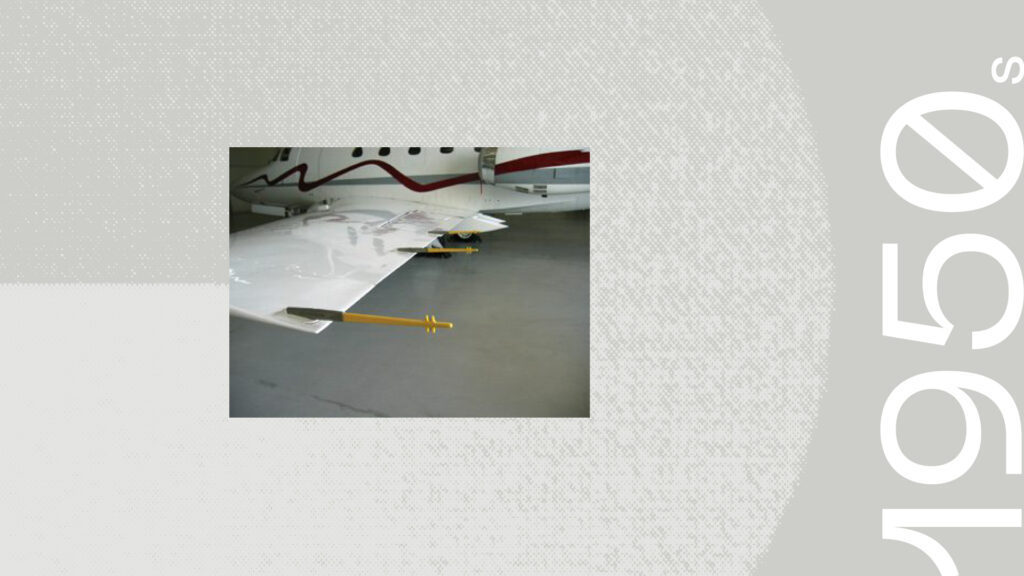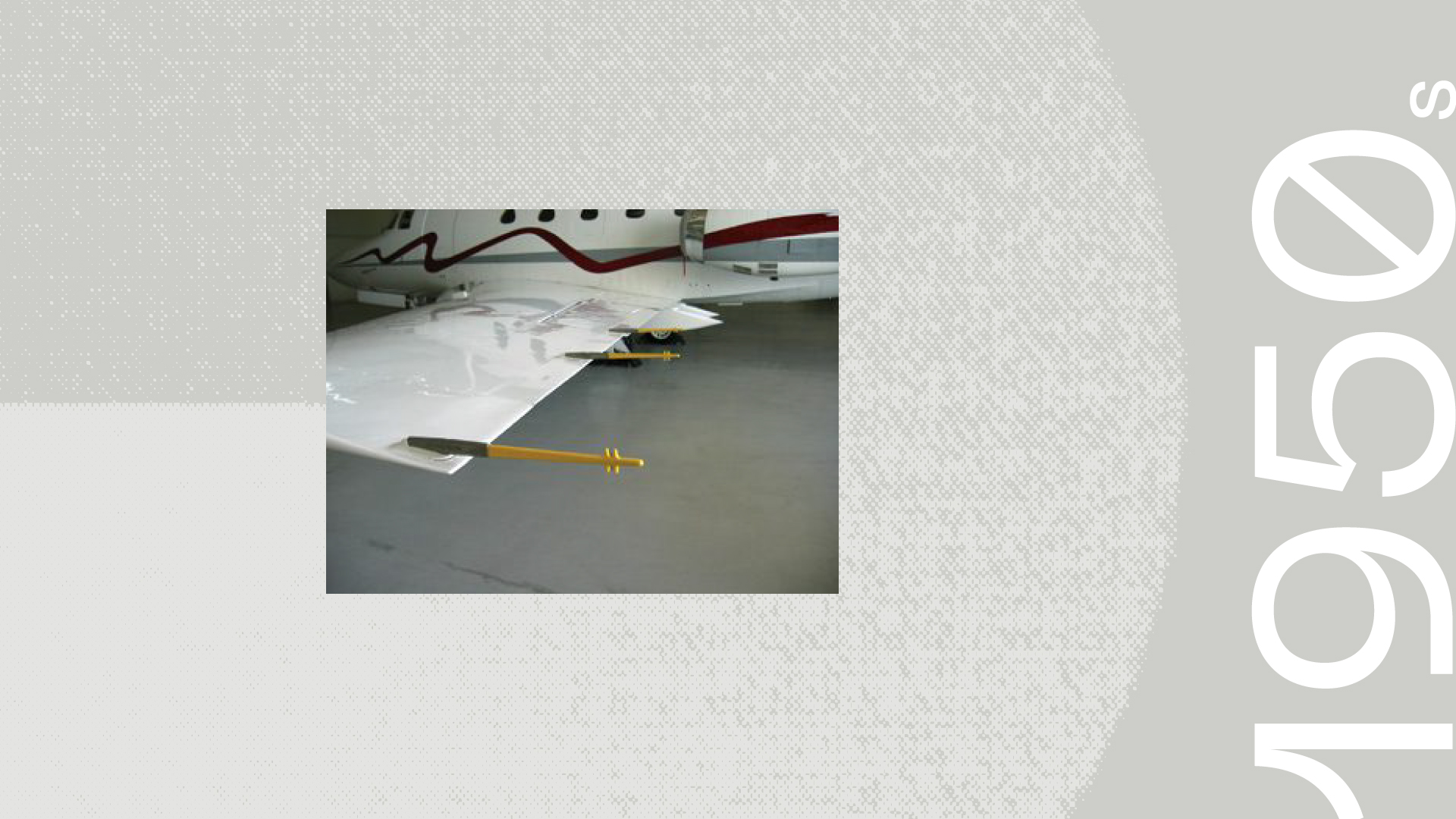
Electricity builds up on surfaces as a result of friction (triboelectricity) from airborne particles, such as the dust stirred up by helicopters or rocket exhaust. It also builds up from receiving charge from another source, such as lightning. The result can be radio static that impairs intelligibility or sparks that cause explosions during refueling or operations such as cleaning the hold of a ship that hauls grain.
SRI developed the device used on airplane wings to discharge static electricity as it is produced—say, by the friction of water droplets as the plane flies through a cloud—so that it does not build to levels that might cause radio interference or other problems. We developed a variety of additional devices and techniques to prevent explosions and occurrences such as the Apollo 13 disaster. SRI’s work also added considerably to the body of knowledge of triboelectricity and its effects.
SRI designed the initial electrostatic discharge (ESD) device for Boeing airliners. Others have modified the device many times since, and aircraft, spacecraft, and tankers (rail, highway, and marine) all now routinely carry static discharge devices.



